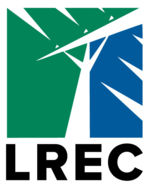I’m happy that many of our members attended the cooperative’s recent annual meeting. We greatly appreciate your interest and participation in Lake Region Electric Cooperative. We’re proud of our accomplishments and hope that you also share in that pride. That’s because you’re a co-op member, making this the utility that you own and control. All that we do, we do for you!
As we prepared for the annual meeting, our thoughts turned to the long history we have in the communities within our service territory. Times change with new innovations and uses of electricity. Our industry itself has undergone enormous changes from our early years. Yet, we’ve never wavered from one very important thing—accountability to Lake Region’s grassroots members and encouraging their continued engagement with the cooperative. Just think about this—when the cooperative was first organized to bring utility service to rural areas, our employees engaged with members to teach them the benefits of electricity and its many uses as an extra “hired hand” on the farm. Today, we recognize all the diverse ways our members depend on reliable, safe, and affordable electricity. We help co-op members make wise and efficient choices in their use of electricity. Keeping our cooperative financially strong, innovative, proactive, and attentive to members’ needs are goals for this 21st century electric cooperative. Sure, times change, but not Lake Region’s core principles and values.
Lake Region Electric Cooperative has a rather unique service territory and membership composition. For instance, our service territory encompasses about 1,000 lakes — presenting some terrain and power line siting challenges. As a highly recreational area, about 30 percent of our 28,125 consumer accounts are seasonal in nature. You might be surprised to learn that our cooperative has members from all 50 states.
Members Share in Our Financial Success
A significant highlight for 2017 was the capital credit retirement (return) of $1,211,928 for patronage during the years 1991 – 1994. This makes five consecutive years with more than a million-dollar pay back in capital credits. Since Lake Region began paying capital credits in 1958, a total of $25,473,604 has been retired to members.
We’ve also focused on steadily increasing member equity as a measure of financial strength. The equity level for 2017 more than doubled since 2005. Our margins, from which capital credits are generated, have also remained at favorable levels.
Our tactical approach to controlling costs is also benefiting the co-op’s bottom line. In fact, controllable costs per member are lower today than they were back in 2004.
Local Control with Accountability to Members
The election of directors from the membership keeps decision making local. Due to director term limits, District 3 will hold an election next year. Later this year, we plan to hold an educational session to acquaint anyone interested in running for the position about the role and responsibilities of being a co-op director.
New Revenue Streams Created
One key responsibility our management team shares with the board of directors is fiscal management for the benefit of our member-owners. Not only does this involve controlling costs, but also creating new revenues to offset expenditures that would otherwise need to be recovered through the electric rates. Our rate stabilization plan includes new revenue streams that have benefited our members in multiple ways. For instance, we recently launched a Residential Standby Generator Program as a premium service that affords peace of mind to those who cannot risk being without electricity. The new revenue it creates also provides a rate benefit for all members.
Lake Region took a threat and created an opportunity when we moved to expand natural gas service into our area, particularly to Parkers Prairie, Deer Creek, Miltona, and Dent. We used the cooperative philosophy and applied it to the gas business. We selected experienced partners and cross-trained employees. Through leveraging our core competencies, we haven’t needed to add employees. This helps expenses on the electric side of our business, too, because it allows us to recover some of our employee costs through the gas business. The estimated annual benefit from these natural gas extensions is approximately $255,000 in electric rates offsets. Our long-range expectations indicate a 5–7% rate of return on the natural gas extensions. Most importantly, though, is the fact that the natural gas service is helping our members switch from propane and save money.
Improved Reliability
We certainly have kept our eyes on our core electric business, too. Member satisfaction has always hinged on rates and service reliability. We’ve made a commitment to improving reliability by reinvesting in our local grid through system improvements, tree clearing, and vegetation management. Our use of data analytics has given us the tools to map out outage prone areas and drill down to investigate causes and make corrections. As a result, there has been a 57% decrease in outage time since 2004, excluding major storms and power supplier outages. From 2010 through 2014, we spent $8.8 million on very aggressive tree clearing and completed the first system-wide cycle of right-of-way clearing. As a result, we are spending less now on clearing than we did in 2004.
 Positive Impact on Electric Rates
Positive Impact on Electric Rates
All of these factors have placed Lake Region in an enviable position with its electric rates. Ten years ago, our winter rate was on the higher end when compared to a peer group of Minnesota electric cooperatives. Today, the winter rate is considerably lower by comparison. The summer rate is even better, being on the low end of the comparison.

 Lake Region Electric Cooperative
Lake Region Electric Cooperative